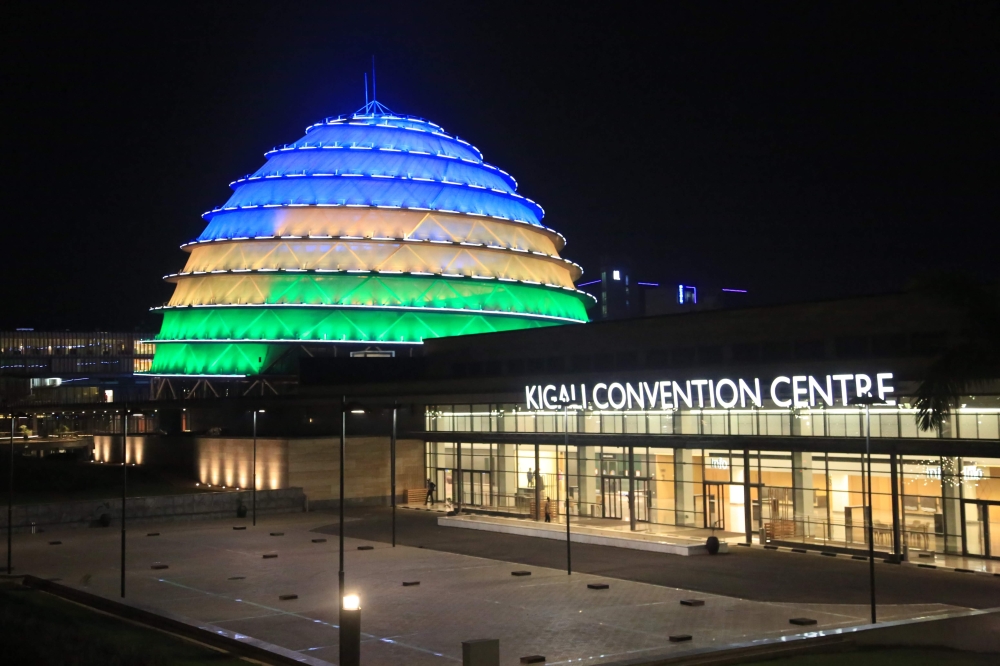

American credit rating agency, Fitch Ratings, affirmed Rwanda’s credit ratings with a stable outlook, its latest rating note indicated.
According to the note, Rwanda’s ‘B+’ rating reflects its low gross domestic product (GDP) per capita ($1,040) and persistent twin budget and current account deficits, resulting in high public and external indebtedness. These weaknesses, however, are balanced by the highly concessional nature of the country’s debt, strong governance indicators compared to peers, high medium-term growth potential, and a track record of strong official financial and technical support, Fitch explained.
ALSO READ: Rwanda leads region in World Bank Business-Ready survey
The agency forecasts a real GDP growth of 8 percent in 2024, decelerating to an average of 6.7 percent over the next financial year (2025-2026), against the projected 4.1 percent growth for the ‘B’ median, due to gradual fiscal consolidation amid still relatively high public sector investment.
Rwanda’s economic growth is expected to remain well above its peers, partly supported by the construction of the new international airport in Bugesera District and household consumption (buoyed by credit availability and a stronger labour market), as well as easing monetary policy.
Fitch added that the impact of the outbreak of the Marburg virus in late September is uncertain.
Inflation rates to fall
Rwanda’s consumer inflation was down to an average of 4.9 percent during the first eight months (January-August) of 2024, reflecting the previous tightening of monetary policy over the last two years as well as declining imported and domestic food prices.
The rating agency projects average annual inflation in Rwanda to fall to 4.5 percent in 2024 from 14.3 percent in 2023, before rising to 5.9 percent in 2025.
While the ratio is well within the central bank’s target range, between 2 percent and 8 percent, Fitch said that it remains above the 4.6 percent projected for ‘B’ peers.
According to the rating note, Fitch expects further easing of monetary policy following the central bank’s cut of 100bp to its key policy rate (between January and August) to 6.5 percent.
Fitch also forecasts Rwanda’s fiscal deficit to narrow to 5.5 percent of GDP in the current fiscal year and to 4.6 percent in the next fiscal year.
The reduction is expected to be driven by a decline in election-related spending and expense rationalization measures authorities implemented with the support of the World Bank and IMF.
"We also assume a modest decline in capex to 9.3 percent in the next fiscal year from 9.9 percent of the economy in the previous financial year ended June 2024. We expect only a small contribution to fiscal consolidation from higher revenues, as we anticipate tax revenue increases to be largely offset by a projected decline in grants,” Fitch said in the note.
On borrowing, Fitch expects debt to increase to 75.6 percent of GDP in 2024 and 78.2 percent in 2025, from 73.5 percent in 2023, due to further exchange-rate depreciation, primary deficits, and the government’s contribution to the airport construction financing, which will offset strong nominal GDP growth.
Rwanda's debt to GDP ratio remains well above the 52 percent forecast ‘B’ median in 2025. But the country’s highly concessional nature mitigates near-term debt sustainability risks, the rating agency said.
Fitch explained that the average time-to-maturity of external debt was 15 years in June 2024, with an average weighted interest rate of 2 percent. The next Eurobond amortization is due in 2031, following the repayment of its 2013 Eurobond in 2023.
According to Fitch, Rwanda benefits from strong external loan commitments from bilateral and multilateral sources estimated at $1 billion per year in 2025 and 2026. These multilateral lenders include the World Bank, the African Development Bank and the International Monetary Fund (IMF).
"We forecast access to this financing to translate into an interest/revenue ratio of 10.9 percent over 2024-2026, below the forecast 12.8 percent ‘B’ median for the period.”. Rwanda’s performance under its IMF Policy Coordination Instrument, Resilience and Sustainability Facility, and Standby Credit Facility remained strong at the latest reviews, Fitch said
ALSO READ: Why Rwanda is attracting increased investments
It expects Rwanda’s current account deficit to widen to 12.5 percent of GDP in 2024 from 11.7 percent in 2023, reflecting buoyant imports associated with the strong economic activity.
"We forecast the current account deficit to narrow to 11.6% and 10.6% of GDP in 2025 and 2026, respectively, mostly due to the narrowing fiscal deficit and the impact of real effective exchange-rate depreciation.
"A more significant reduction of the current account deficit will be prevented by the imports associated with the construction of the Bugesera airport, which we assume will begin in 2025”, Fitch said.
Rwanda’s modest foreign direct investment inflows to finance the current account deficit mean that net external debt will continue to increase, reaching 66.8 percent of GDP in 2026 from 54.4 percent in 2023, well above the ‘B’ median of 23 percent.
ALSO READ: Foreign direct investment into Rwanda up 63% in first half
Significant external borrowing, including that related to financing the new airport in Bugesera, will lift reserves from a projected $1.9 billion in 2024 to $.2 billion in 2026.
This will translate into a stabilization of foreign reserves coverage of the current external payment of 3.6 months between 2024 and 2026, according to the rating agency.


